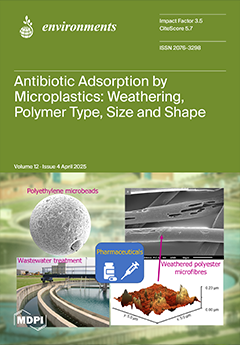A future radioactive waste management centre is under development in central Croatia. One of the activities in the centre’s development was to monitor environmental radioactivity before the disposal of radioactive materials. Part of the monitoring programme focused on soil characterisation in the municipality (total area 1308 km
2) surrounding the centre, where about 40% of the soil is today used in organic farming. The study included a physico-chemical and radionuclide characterisation of the soil as well as ambient dose rate measurements. The aim of this study was to investigate how the physical and chemical composition of soil affects the concentration of radionuclides
238U,
40K, and
137Cs in soil, based on the measured radionuclide concentrations and values of selected soil parameters. Additionally, the ambient equivalent dose rate H*(10)/t was measured and the annual effective dose was calculated for the average person living in the area of interest. The observed ranges of radionuclide concentrations in the soil samples were: 9–72 Bq/kg for
238U, 65–823 Bq/kg for
40K, and 4–80 Bq/kg for
137Cs. Ambient dose equivalent rate measurements were in the range of 52–130 nSv/h. The highest measured values were in correlation with higher
238U activity concentrations in these parts of the investigated area. The results of this study showed that
238U had a significant correlation with pH; plant available P; sand, silt, and clay content; hydrolytic acidity; CaCO
3; total carbon, organic matter, and total inorganic and organic carbon; and concentrations of Al, Si, Fe, Ca, Ti, K, Rb, Zr, Nb, Y, Sr, Th, and W.
40K showed a significant correlation with pH, sand content, hydrolytic acidity, total hydrogen, total nitrogen, CaCO
3, total carbon, total inorganic carbon, and concentrations of Al, Si, Fe, Ca, Ti, Rb, Zr, Nb, P, Y, Zn, and Th.
137Cs showed a significant correlation with silt content, total nitrogen, and Si concentration.
Full article





